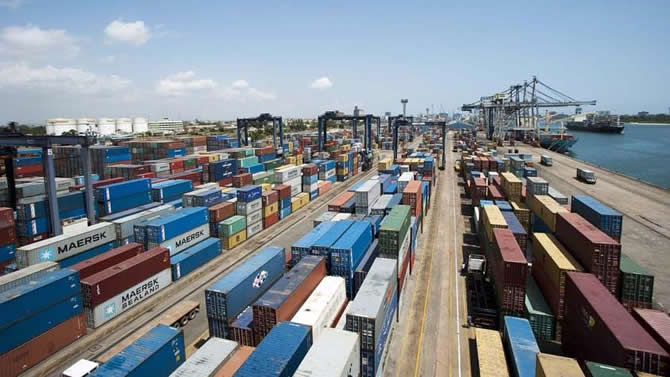Thanks to the in-depth changes envisaged in the manufacturing industry, infrastructures, agricultural production and services, NDS30 intends to transform Cameroon as both the granary and factory of Central Africa.
The infrastructural boom induced by GESP implementation enabled the share of manufacturing industry in Cameroon’s GDP to be raised from 8% in 2010 to 12.9% in 2016. This indicator exceeds by 0.4 point the projections contained in Vision 2035, the Ministry of Economy, Planning and Regional Development points out. But, is spite of this progress, NDS30 underscores, the country’s exports continue to be dominated by 66% of raw materials.
Better still, an analysis of Cameroon’s import structure highlights an increase in final consumer goods, whose share in imports moved from 32% over the 2000-2009 period, to 34% over the 2010-2017 period. This reality considerably weighs on the country’s balance of trade and renders the nation’s economy overly extraverted.
In order to reverse this trend, NDS30 intends to structurally transform Cameroon’s economy during the next ten (10) years. This transformation, as we learn ‘‘passes through the densification of the manufacturing industry as well as high-productivity services sectors and technological catch-up which finds expression in an increase in agricultural productivity and its modernization’’.
Concretely, it will entail investing massively to benefit from all opportunities offered by key sectors such as energy industry, financial services, agro-industry, digital technology, forest-wood, textile-clothing-leather, mines-metallurgy-siderurgy, hydrocarbons-petrochemicals-refining, chemistry-pharmaceuticals, constructions, services, etc.
In greater detail, it entails, through NDS30, raising for example cotton production to 600 000 tons (as against 320 000 tons currently) in 2025, and succeeding in transforming 50% locally by the year 2030, thanks to what designers of the strategy refer to as ‘‘a strategic rapprochement’’ between the Cotton Development Corporation (Sodecoton) and Cameroon Industrial Cotton Corporation (Cicam).
The joining of forces of these two industrial plants will, as we learn, enable to develop an industry for the manufacture and production of clothing, notably sportswear (jerseys tracksuits, baskets, etc.), capable of satisfying at least 50% of national de- mand; and supplying the major State corps (military, police and civil) with clothing and equipment incorporating at least 60% of Cameroonians cotton.
In the structural transformation of Cameroon’s economy, it is also an issue of raising the country’s installed power generation capacity from 1650 to 5 000 MW; receiving 3.5 million tourists on average per year (as against barely one million nowadays); raising the rate of use of banking services from 12.2% currently (as against an African average of 29%) to 80% in 2030, thereby boosting the rate of bank financing of the economy from 15.9% of GDP in 2018 to a minimum of 70% of GDP in 2030.
It however entails substantially reducing imports by implementing the im- port-substitution policy, the corollary of which is the promotion of the ‘‘made in Cameroon’’ label; constructing 3500 km of roads and rehabilitating 2 000 km of existing roads; or better still tapping on the oil and gas potential of the Bakassi peninsular in the South-West Region…
“It will entail investing massively to benefit from all opportunities offered by key sectors such as energy industry, financial services, agro-industry, digital technology …”
All these actions and many others provided for by NDS30 will in the final analysis enable to ‘‘increase the share of the secondary sector in the country’s GDP from 28.2% in 2018 to 36.8% by the year 2030; stepping up the manufacturing value-added (MVA) from 12.9% in 2016 to 25% in 2030; and rai- sing the share of exports of manufactured products from 26.25% in 2015 to 54.5% in 2030’’, the strategy reveals.
Such a performance, as we learn, will transform Cameroon into ‘‘the switch’’ (electricity supplier), ‘‘the feeder’’ (supplier of agro-industrial produce) and ‘‘the equipment manufacturer’’ (supplier of capital goods, notably furniture) to Economic Community of Central African States (ECCAS) and Nigeria’’, within an effective operationalization context of the African Continental Free Trade Area (ACFTA).
Brice R. Mbodiam





0 Comments